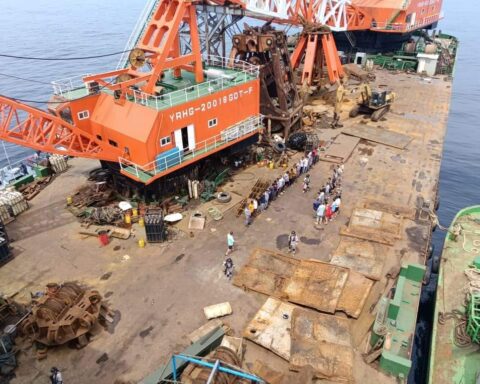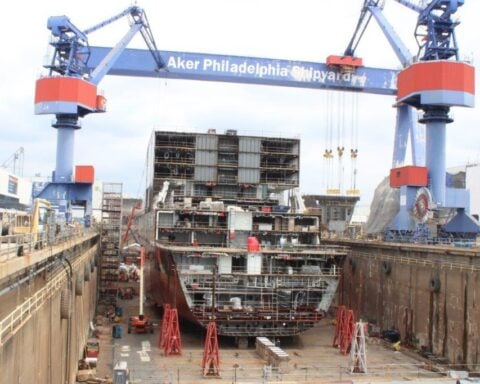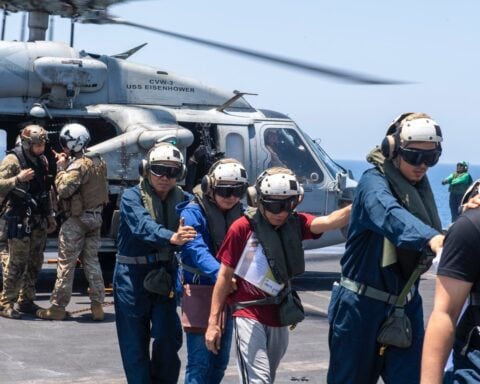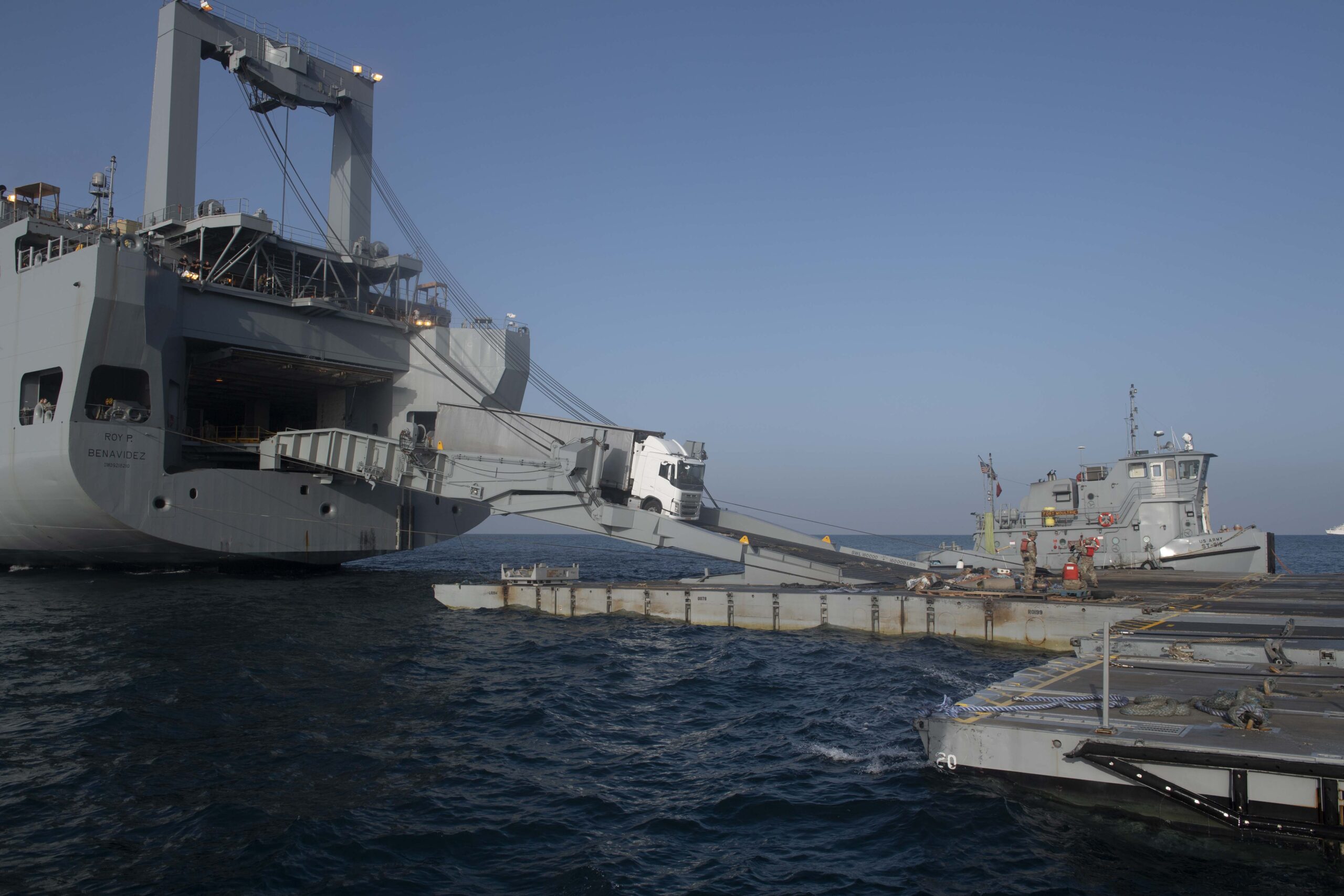
A U.S. soldier assigned to the Gaza pier mission was seriously injured on Thursday and medically evacuated to Israel, two defense officials confirmed to USNI News.
The soldier was working on the staging platform two miles off the coast of Gaza, where trucks filled with aid packages are driven from cargo ships onto Army watercraft, the defense officials told USNI News. At the time of the injury, the roll-on roll-off cargo ship MV Benevides was attached to the platform.
Vice Adm. Brad Cooper, the deputy commander of U.S. Central Command, told reporters on Thursday that a total of three service members were injured in non-combat-related incidents at sea.
“Three injuries, two were very minor injuries and those individuals returned to duty. One individual is undergoing care at a local Israeli hospital,” Cooper told reporters during a Thursday Pentagon briefing.
Officials did not mention any attacks or incidents directly targeting the pier or the staging area two miles off the coast.
The pier has been in operation since last week, providing aid to Gaza. The trucks are loaded in Cyprus and sail to the staging area off the coast. From there, the trucks drive on to U.S. Army watercraft and sail to the pier, which is anchored to the beach in Gaza. After arrival, the humanitarian supplies are processed in a marshaling area before going to various warehouses and distribution points.
“In the last several days, we’ve delivered over a million pounds of aid into the hands of Palestinians. We can all feel good about that,” said Cooper.
Announced three months ago during President Joe Biden’s annual State of the Union address, Army watercraft and Navy transport ships set off for the Mediterranean in March for a joint logistics over-the-shore (JLOTS) mission to aid Palestinians in war-torn Gaza. The effort includes the U.S. Army’s 7th Transportation Brigade and the U.S. Navy’s Naval Beach Group One.

Cooper and an official with the U.S. Agency for International Development summarized the first week of humanitarian pier operations for Pentagon reporters.
“The maritime corridor is a complex, multi-step process through which aid is moved to humanitarian organizations ready to facilitate its distribution to Palestinian communities throughout Gaza in an independent, neutral and impartial manner,” said Daniel Dieckhaus, USAID’s Levant response management team director.
Cooper emphasized that there are no U.S. personnel on the ground during the ground-based distribution in Gaza, stating that humanitarian workers are “solely” responsible for those phases of the process.
Of the 820 tons of aid delivered to Gaza since Friday, 506 tons have been distributed by the United Nations. However, Dieckhaus emphasized that the multinational humanitarian maritime corridor “does not replace land crossings and it is not intended to do so.” According to Dieckhaus, of the 70 truckloads of assistance delivered to Gaza on Wednesday, 23 came from the pier.
“I just want to be clear that this humanitarian maritime corridor alone is not enough to meet the staggering needs in Gaza, but it is an important addition. It is meant to augment, not replace or substitute for land crossings into Gaza,” said Dieckhaus.
Both officials also pushed back on reports of aid trucks getting looted after leaving the coastal distribution area, with Dieckhaus stating that these incidents “represent a minority of the overall shipments.” According to Cooper, of the 54 trucks sent out from the humanitarian maritime corridor over the last two days, only one had an incident.
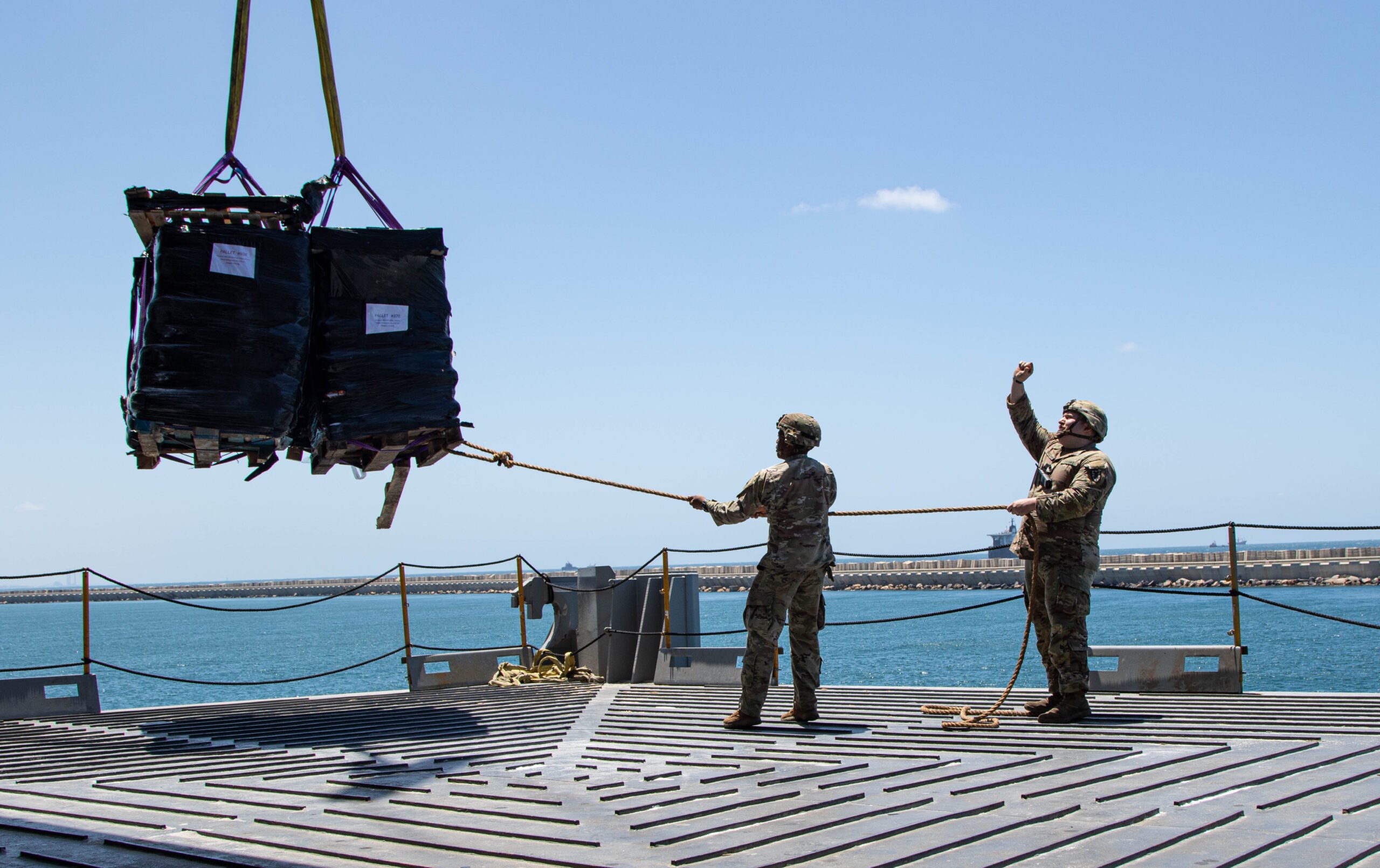
Given its location in an active warzone, Cooper and Dieckhaus noted the challenges of the operation.
For example, Cooper said a Hamas drone attack on the Israeli Defense Forces only a few miles away from the pier temporarily paused all humanitarian activities, but did not say for how long. While this attack did not directly impact or target U.S. forces or the pier, it delayed aid convoys.
U.S. forces have dedicated around 1000 personnel and 16 ships to the operation, including the deployment of at least one counter rocket, artillery, and mortar system on the pier itself. While Cooper would not comment on the force protection deployed by U.S. forces, he said the deployment of these systems is “prudent planning.”
The Israeli Defense Forces are the main security providers for the operation and have dedicated a brigade of troops and various air and naval assets. Two U.S. Navy destroyers will aid in the protection of the pier, Military.com reported.
USNI News staff writer Sam LaGrone contributed to this report.


